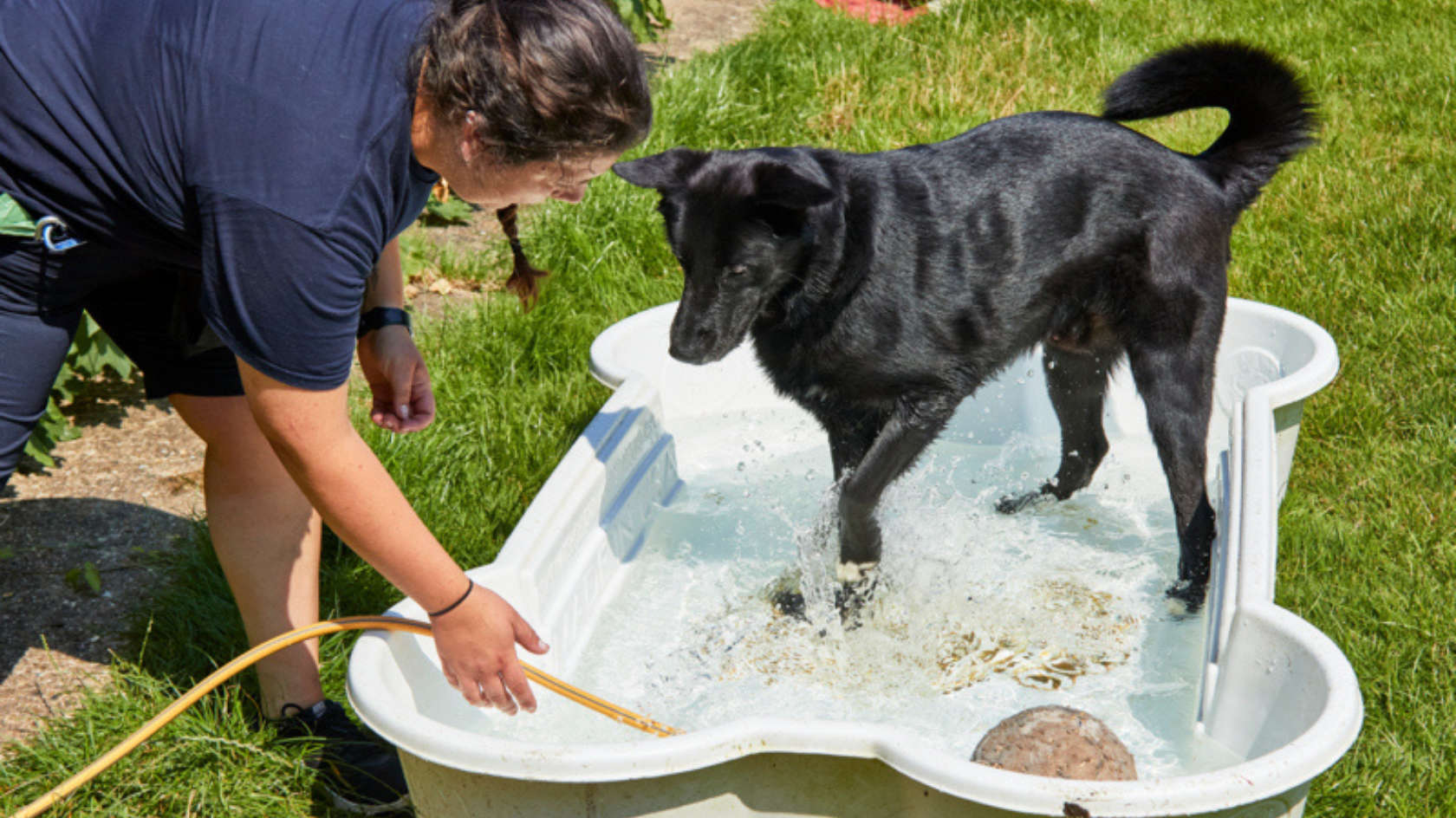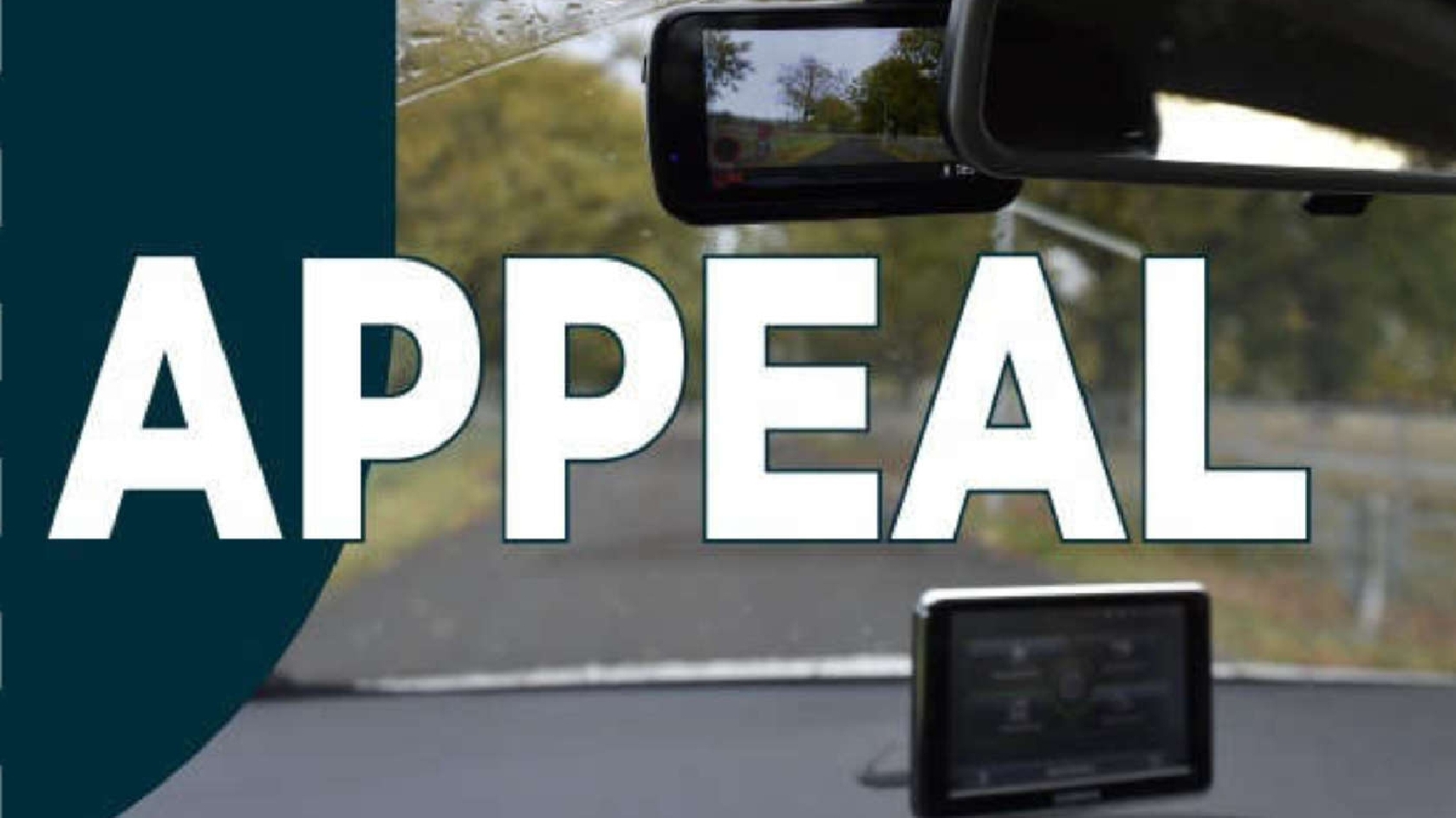
Heatwave pet care myths: RSPCA pet experts debunk ten common misconceptions RSPCA sets record on ten common pet care confusions.
As the majority of England experiences the hottest temperatures of the year so far, the RSPCA has debunked ten common myths about keeping pets cool.
As the Met Office confirms temperatures are rising further today topping 30 degrees celsius (86°F) widely across England, pet owners up and down the country are helping their beloved animals to stay cool and comfortable.
But pet experts from the RSPCA are keen to debunk a number of common misconceptions that may help pet owners optimise the ways they are keeping their animals cool - from how to properly use cooling mats to the dos and don’ts of wet towels, ice cubes and more.
Lauren Bennett, dog welfare expert at the RSPCA said: “This bout of really intense heat can be such a stressful time for pet owners, as we try to keep our beloved animals as cool as we can. The best way to protect our pets is by equipping ourselves with the right knowledge and latest science-backed research, to give us the most effective ways to do that.
“Sadly, there’s a lot of myths out there about how to keep pets cool - so we’ve debunking the falsehoods, and helping pet owners know what to do when it comes to heat-related pet care.”
Myth 1: Cooling mats and cooling jackets are all the same
FALSE. Not all cooling mats and cooling jackets are created equal. Some are designed with self-cooling gel that remains cool without refrigeration, while others require pre-cooling in the fridge or freezer. It's important to select a mat that suits you and your dog's individual needs and to follow the manufacturer's instructions for safe use.
Cooling jackets must be used with caution. If they’re not used properly, for example those that need to be kept constantly wet, they can insulate your dog and make them even hotter.
Lauren said: “Be sure to monitor the mat regularly during use, as some can retain heat once they have warmed up or reached the end of their cooling effect, potentially making your dog hotter rather than cooler.”
Remember: prevention is always better than a cure. First aid or cooling products like gel mats, cooling jackets and boots on paws should never be used as a way to justify walking your dog in hot weather. Avoiding heat-related risks in the first place is the best way to protect your pet’s health and well-being.
Myth 2: All dogs still need to be walked every day regardless of the weather
FALSE. Walks and other exercise are great and some dogs may seem to demand their usual routine, but on hot days they can be dangerous. Exercise is the leading trigger of heatstroke in UK dogs. Instead, keep your dog engaged at home with puzzle toys, training games, or scent work. Mental stimulation can engage even the most active dogs, and is much safer in the heat. You can also plan dog walks to avoid the hottest parts of the day: early morning is usually safest but think ‘dawn or dusk’ when planning summer activity. If your dog wants to sleep because of the warm weather, let them.
Myth 3: Ice cubes are dangerous
FALSE. Offering ice cubes or frozen treats for your dog to eat in hot weather can be safe when done correctly. Crunching or licking small amounts of ice cubes, or popping them into their water bowl can help cool your dog down, but always supervise your dog to prevent choking hazards.
Myth 4: Damp towels should be placed over hot dogs
FALSE. Please don’t do this. Placing damp towels directly over your dog's body can trap heat and worsen their condition. There may be some value from placing wet or damp towels under your dog but never over their body, and you must re-wet the towel frequently to improve the cooling effectiveness.
Myth 5: Everything written online about pets in hot weather is good advice
FALSE. While the internet is full of all kinds of dog cooling ‘tips’, some outdated, some just plain dangerous. Not all advice is bad, but you do need to stick to what’s backed by real science. Be particularly aware of social media crazes that suggest weird and whacky tips.
Myth 6: Transporting a heat-struck dog immediately to the vet is sufficient
FALSE. Traditionally, pet owners have been advised to rush a heat-stroked dog to the vet in the car without delay. However, the Dogs Die in Hot Cars and Hot Walks Coalition advises that this approach may exacerbate the dog's condition, especially if transporting them in a warm car.
The current best practice, as endorsed by the Royal Veterinary College, is to:
- Stop: Cease all activity and remove the dog from the hot environment.
- Cool: Initiate cooling by applying water cooler than the dog's body temperature, using methods such as immersion or pouring water combined with air movement (e.g., from a fan).
- Transport: Once the dog's temperature begins to decrease, transport them to the veterinary clinic in a cooled, well-ventilated vehicle and continue the cooling process in transit.
This ‘Cool First, Transport Second’ advice is crucial, as prolonged elevated body temperature can lead to severe organ damage and even death. Immediate cooling significantly improves the chances of recovery.
Myth 7: Cold water causes shock
FALSE. Contrary to popular belief, cold water rarely causes shock in over-heating dogs - dousing or immersing your over-heated dog in cold water is vital to their recovery. The effects of heatstroke are incredibly dangerous and fatal if left untreated, so rapid cooling is essential to give a dog suffering with heatstroke the best chance of recovery.
Myth 8: The water used to cool dogs must be at a specific temperature
FALSE. It's a common misconception that the water used to cool an overheated dog must be at a precise temperature. In reality, any water that’s cooler than the dog's body temperature can aid in cooling. The most important thing is to wet the dog liberally as soon as possible after you notice them overheating, and then use fans to encourage water evaporation and heat loss. Don’t delay by trying to find water at an ‘ideal’ temperature - use whatever you have readily available.
Myth 9: It’s impossible to know what to do for our pets in the heat
FALSE. There’s so much you can learn about your individual pet to keep them cool. Sign up to attend one of the RSPCA’s monthly virtual Cool Dog Summer workshops to learn more about keeping your dog safe during the summer season.
Myth 10: If you see a dog in a hot car, call the RSPCA
FALSE. Seeing a dog in a hot car is an emergency and should be reported immediately to the police, rather than the RSPCA in the first instance. Only the police have the legal power to enter a vehicle to rescue an animal in distress. If you believe a dog is in danger, call 999 without delay.
Lauren adds: “We’re encouraging owners to do some ‘pet homework’ now ahead of even more hot weather that we’re likely to see as summer continues. If more of us can start taking a few steps now to reduce the risk to our pets, hopefully fewer dogs and other pets will be put at risk.
“Pet owners can all do their bit to be prepared and spread the word. Our interactive and accessible ‘Cool Dog Summer’ workshops online for the public help owners get savvy, and clued up, as the temperatures soar.
“There’s plenty that people can be doing now, from getting into the habit of checking the temperature forecasts every day to knowing the best way to cool down their dog after a walk; or planning how they will change their daily routine during hot spells, and knowing how to act in the event of heatstroke. Together, we can all be there for animals during the hot weather spells.”
Top tips for pet owners in hot weather
- Have a go at making some frozen dog treats to keep your pooch cool
- Watch the RSPCA’s video on how to keep cats cool in hot weather
- Don’t let your pet get sunburnt - use pet-safe sun cream.
- Ensure animals have constant access to shade and fresh drinking water at all times. For animals that are kept outside, remember that as the sun moves during the day so too does the shade. Somewhere that was shaded in the morning could be in full sun by the afternoon.
- Keep guinea pigs cool and hydrated by making them a fresh vegetable treat
- Check small animals, poultry and other pets twice a day for flystrike.
- Keep fish tanks out of direct sunlight.
- Keep pesticides out of reach of animals.
- For horses stabled during the day out of the heat, try making them our horse and pony boredom buster treat
- Wrap an ice pack or frozen water bottle in a tea towel, or use damp towels for your pet to lie on.
- Encourage pet chickens to stay in shaded areas by hanging up a homemade vegetable garland for chickens
- Use cold treats from the fridge for added moisture or make an ice lolly for your dog from pet-friendly ingredients.
- Freeze your dog’s water bowl or kong, or add ice cubes to your pet’s bowl.
- Fill a paddling pool or spray a hose for your dog to play in - but always supervise them around water.
- Make sure that pet snake enclosures are kept secure - and locked if necessary - when unattended, as snakes become more active during hot weather and can be excellent escape artists and will take the opportunity of a gap in an enclosure door, or a loose-fitting lid to make a break for it.















